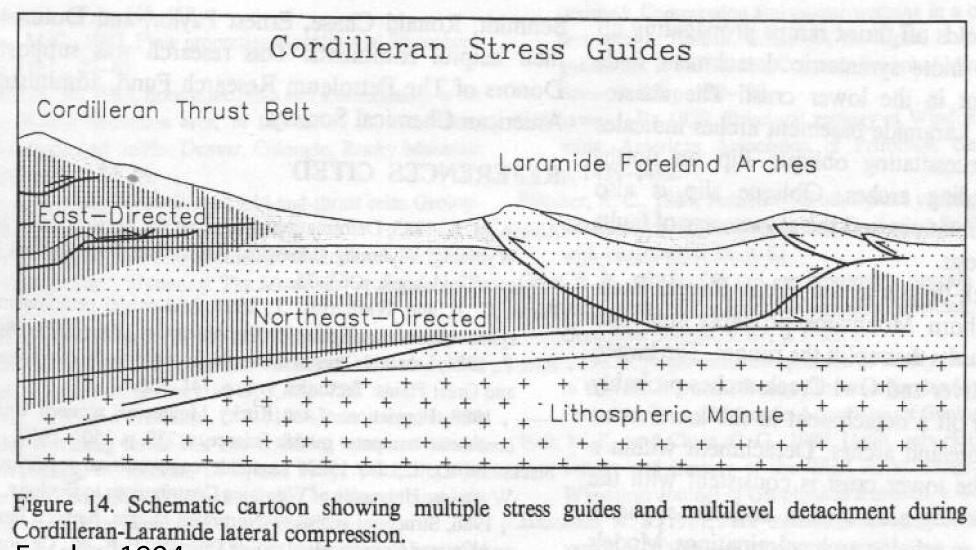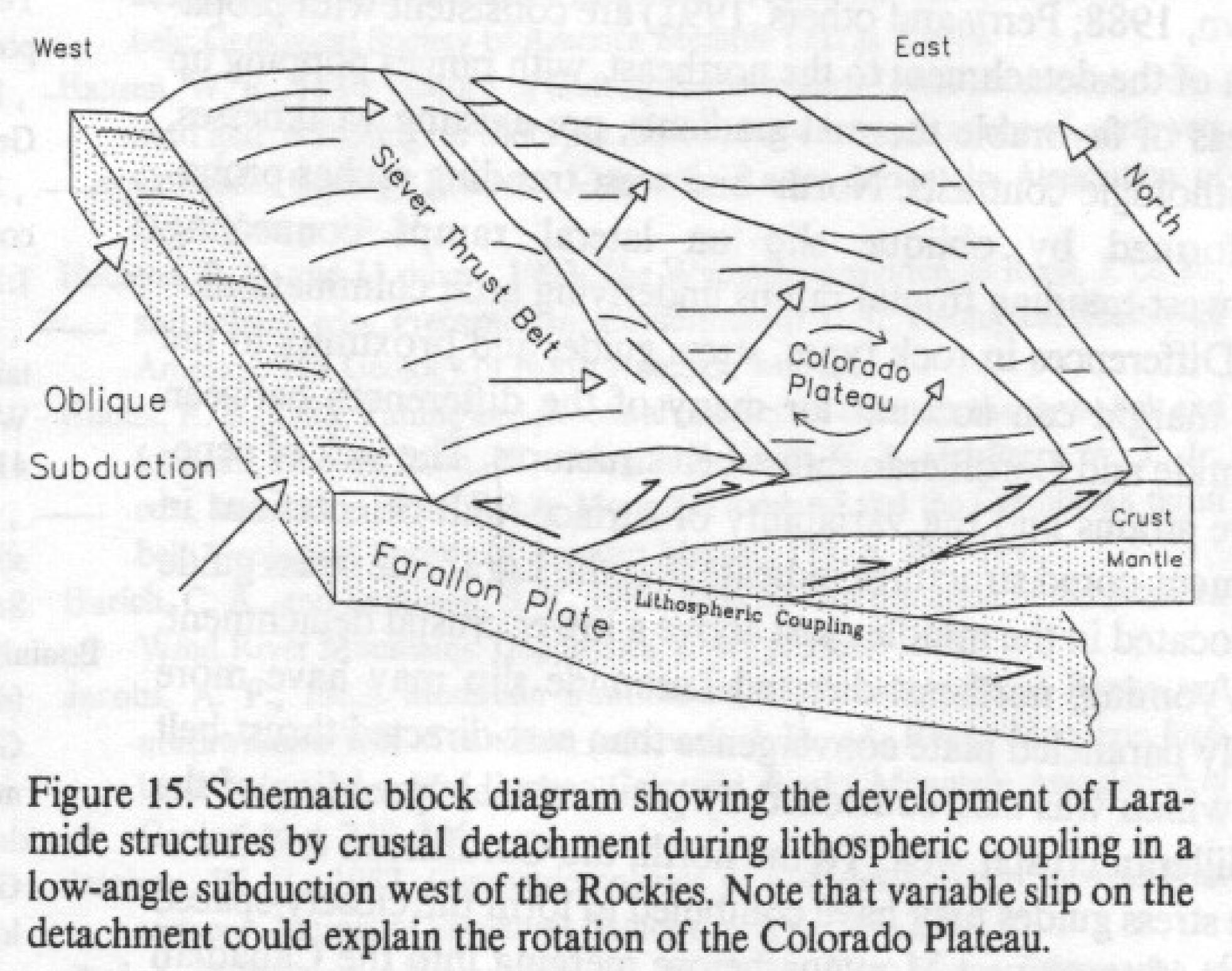
Erselev, 1993

Erselev, 1993
The Laramide Orogeny from the late Cretaceous to Miocene was thick-skinned deformation, or basement uplift of lower crustal granitic rock to the surface, in constrast to the thin-skinned deformation of the Sevier Orogeny. Like the Sevier, the Laramide is thought to be caused by horizontal compressive stress from the subducting Farallon Plate under the North America Plate. An unusal aspect of the Laramide uplift is that the strain occurred within the North America Plate rather than on the plate boundary. One hypothesis to explain this deformation has stress from the western convergent zone transmitting through basal shear between a shallow dipping or a flattened subducted Farallon Plate (Erselev, 1993; Bird, 1988). The result left NW-SE striking reverse faulting structures from Montana to Colorado dipping in eastern and western directions and 10-15% shortening (Erselev, 1993).
